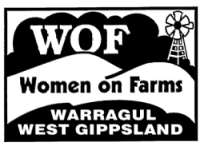Animal health and grazing management is of prime importance to these farmers. They have found that increased quantities of fertilizer is needed to produce required pH levels these days, so ,with the help of an agronomist and soil testing, they are using compost as a soil improver with pleasing results.
The compost is layered in windrows over 100metres in length on a slope on the farm. The windrows run up and down the slope as cross-ways would catch water against the rows. Old silage ,straw and square hay bales are used along with sawdust and other green waste materials from local farms. The green waste is helpful in providing good fungi in the compost. The ideal temperature for the compost to activate is 55-65 degrees, as the weed seeds are not killed below 55 degrees. If too hot the “good bugs” are killed off , so destroying the bacteria needed to improve the soil. The more variety of waste green materials , the better for resulting compost. A huge Composting machine valued at over $60,000 is used every 1-2 weeks to turn the windrows , and so aerate the composting materials which take approximately 12 weeks to decompose. It is 3m wide and can turn the materials up to 6 ft high . It can be folded to tow on roads for use on other farms. Sometimes water is added to the materials as the composter moves along the rows and also dripper lines are used to keep the materials moist whilst decomposing . After the turner has moved through the windrows the temp drops to 35 degrees. The “good bugs” lay dormant in the hot composting process but generate after it has cooled down. Turning the rows too frequently slows down the composting process.
During autumn the compost is spread at various depths depending on the needs of the pasture. This is when the soil is still warm and the rains are hopefully falling to wash in the compost and so improve the biology of the soil. Lime is added also to improve the pH on the farm.
Each year the paddocks on the farm are monitored with soil tests for deficiencies such as magnesium, selenium and copper. This year there was less capeweed .
Gardeners can purchase trailer loads of the compost from the farm.
After lunch we were shown the cattle yards which have been re-designed. Much planning with consideration for the safety of both animals and workers has been made. Calf races , fencing, races,gates and raised walkways for attendants have all been designed for time-saving and less stress movement for the animals , and easier access for transport collection. “Cooler paddocks” for holding the cattle after running in the mobs are also used. Educating the calves with quiet handling provides a more safe and contented herd on the farm.
Improved farming techniques arise from continual trialing and careful planning as was shown on this informative visit.





